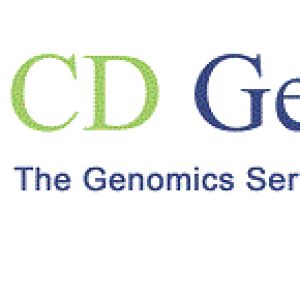Future Medical Applications of Single-cell Sequencing in the Field of Cancer TrePosted by kiko on January 24th, 2019 Advances in whole genome amplification and next-generation sequencing methods have enabled genomic data analysis of single cells. Meanwhile, these techniques are now beginning to be utilized to detect genomic lesions in individual cancer cells. Previous approaches have been unable to resolve genomic differences in complex mixtures of cells, such as heterogeneous tumors, despite the significance of characterizing such tumors for cancer treatment. Sequencing of single cells(single-cell seq) is likely to improve several aspects of medicine, including the early detection of rare tumor cells, monitoring of circulating tumor cells (CTCs), measuring intratumor heterogeneity, and guiding chemotherapy. There are also lots of challenges and technical aspects of single-cell sequencing,and we also need to know how this information can be used to diagnose and treat cancer patients.The clinical value of single-cell genomic methods will be in monitoring CTCs, profiling rare cancer cells in clinical samples, and detecting rare clones that may be resistant to chemotherapy. These applications are likely to improve all the three major themes of oncology: detection, progression, and prediction of therapeutic efficacy.Medical applications of single-cell sequencing. 1. Profiling of rare tumor cells in clinical samples, such as fine-needle aspirates of breast lesions.2. Profiling and isolation of circulating tumor cells in the blood.3. Identification and profiling of rare chemoresistant cells before and after adjuvant therapy.Clinical application of single-cell sequencing While single-cell genomic methods are feasible in some research settings, they won’t be useful in the clinic until improvements are made in reducing the cost and time of sequencing. Fortunately, the cost of DNA sequencing is falling precipitously as a direct result of industry competition and technological innovation. Sequencing has an extra benefit over microarrays in the potential for massive multiplexing of samples using barcoding strategies.A major application of single-cell sequencing will be in the detection of rare tumor cells in cancer samples, where fewer than a hundred cells are typically available. These samples include human body fluids such as lymph, blood, sputum, urine, or vaginal or prostate fluid, as well clinical biopsy samples. Measuring tumor heterogeneity in these scarce clinical samples by genomic data analysis may provide important predictive information on whether these tumors will evolve and become invasive carcinomas, and may lead to better treatment decisions by oncologists.Future directions Single-cell sequencing methods provide an unprecedented view of the genomic diversity within tumors and provide the methods to detect and analyze the genomes of rare cancer cells.In the near future, medical applications of single-cell sequencing will be in early detection, monitoring CTCs during treatment of metastatic patients, and measuring the genomic diversity of solid tumors. While pathologists can currently observe thousands of single cells from a cancer patient under the microscope, they are limited to evaluating copy number at a specific locus for which FISH probes are available. Genomic copy number profiling of single cells can provide a fuller picture of the genome, allowing thousands of potentially aberrant cancer genes to be identified, thereby providing the oncologist with more information on which to base treatment decisions. Another important medical application of single-cell sequencing will be in the profiling of CTCs for monitoring disease during the treatment of metastatic disease. While previous studies have shown value in the simple counting of epithelial cells in the blood, copy number profiling of single CTCs may provide a fuller picture, allowing clinicians to identify genomic amplifications of oncogenes and deletions of tumor suppressors. Such methods will also allow clinicians to monitor CTCs over time following adjuvant or chemotherapy, to determine if the tumor is likely to show recurrence.The major challenge for translating single-cell methods into the clinic will be the innovation of multiplexing strategies to profile hundreds of cells quickly and at a reasonable cost. However, it remains a major technical challenge, and is likely to be the intense focus of both academia and industry in the coming years. These methods are likely to improve all three major themes of medicine: prognostics, diagnostics and chemotherapy, ultimately improving the treatment and survival of cancer patients.Like it? Share it!More by this author |


